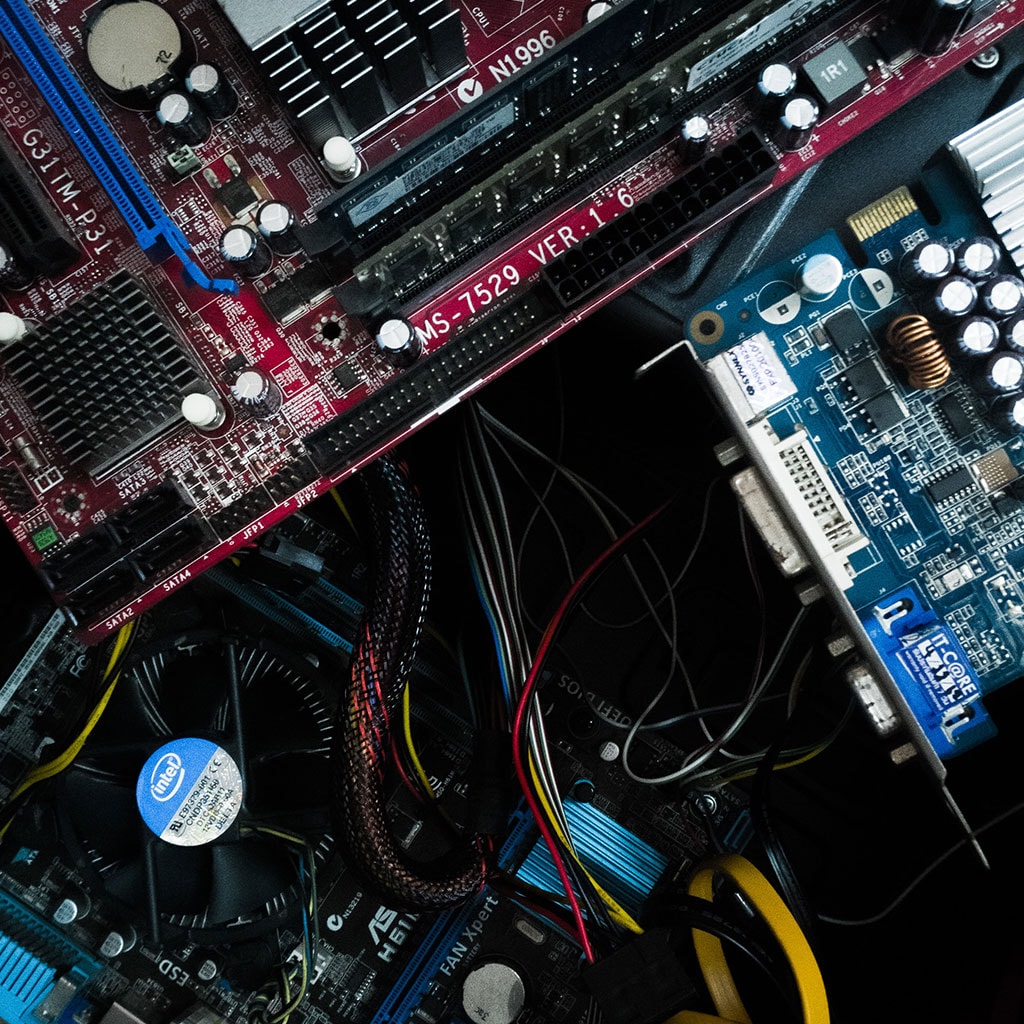Computer waste products are a major source of environmental pollution and can have a devastating effect on the environment. With more people using computers for everyday activities, the amount of computer waste is growing exponentially. Computer waste products include electronic components such as circuit boards, monitors, keyboards, printers, scanners, and other peripherals.
How does disposing of computers affect the environment?
The environmental impact of computer disposal can be quite damaging to our environment and our health. When computers are carelessly disposed of, the hazardous materials found in them such as lead, cadmium, and mercury can cause air and water contamination that affects local ecosystems, wildlife, and human health from exposure to these toxins. Furthermore, unlabeled dumpsites of improperly recycled computers have become common around the world as they are being sold by dealers without their owners knowing the risks associated with unsafe disposals. It is important to note that if computers are not safely disposed properly it could trigger a huge problem for both humans and solar light life-forms.
On the other hand, it’s also essential to recognize that most components of a computer are recyclable or reusable; separate parts such as batteries can often be sent away for proper disposal or reuse depending on the condition they’re in. Therefore proper procedure should be carried out upon disposing your old computer; ensure all component data is deleted by professionals or destroyed physically to ensure no information will be obtained by another person, it’s also important to do research on electronics recycling centers near you that will accept your old equipment so you know where to send it off.
What is e-waste?
Electronic waste, also known as e-waste, refers to any item containing electronic components, cords, or plugs. This could range from computers, televisions and other home appliances such as air conditioners to even children’s toys. Each of these items make up increasing volumes of e-waste across the world. In fact, the Global E-Waste Monitor 2020 reported that the total amount of e-waste generated globally in 2019 was 53 million metric tonnes – a 21% increase from 2014.
One crucial step is sorting this ever growing pile of e-waste into different material groups for recycling. Unfortunately, this task remains incredibly challenging due to technological complexity and heterogeneity of materials used in electronics production. Even countries with established e-waste collection efforts cannot guarantee that their recovered materials are reused and recycled legally or safely; so making sure that we dispose of our e-waste responsibly is essential if we want to prevent potentially hazardous materials entering our environment.
Computers harm the environment with heavy metals
The frequent use of computers in our daily lives entails massive environmental hazards due to the presence of heavy metals. Most computers, including laptops, have multiple parts comprising of various metals such as mercury, lead, chromium and cadmium. Dire environmental repercussions might result in the absence of proper disposal that could be potentially hazardous for planets natural systems.
Mercury is an immensely destructive element that can cause intense skin problems such as extreme itching, burning sensation or discoloration. It can even worse leading to blisters and shedding of skins if a human comes in contact with it directly. The most dangerous property of this metal is that it gets stored and accumulated inside body organs causing long-term mental health issues along with permanent physical afflictions like deformities or damage to nervous system. Apart from humans, similar symptoms are found on animals specially wild ones with direct exposures to these heavy elements affecting their growth rate eventually leading to wiping out an entire species. These minerals are also contributing heavily towards global warming because gases released from these metallic compounds add up to the already damaging situation posed by greenhouse effect further intensifying temperatures around planet adequately enough for a drastic change in climate something that may prove unrecoverable for centuries ahead.
Threats Of Careless Computer Disposal
It is evident that computers have caused many threats to the environment if not disposed of properly. Firstly, computer components are often made with heavy elements, such as batteries and circuits which can then directly pollute ground water and lead to the death of animals who drink it. Additionally, these batteries used in computers can be highly flammable, making them unsafe for storage or act as a potential risk in landfills when they could catch on fire at any time.
Moreover, computers are mainly made from plastic; this particular type being ABS, otherwise known as polystyrene. Decomposition of this material takes much longer than other types of waste and releases toxic particles into the atmosphere. This ultimately leads to a whole range of dangers including skin cancer and various lung related diseases. Therefore, it’s important to practice safe disposal methods to ensure minimal damage is done to our environment.
Impact of e-waste on human health
The impact of e-waste on human health is serious, with factors such as incorrect recycling leading to dangerous exposure to toxic substances. Workers recover valuable materials from e-waste, putting them at risk of exposure to over 1,000 hazardous chemicals, including lead, mercury and nickel. The effects of these toxins can be severe; expectant mothers exposed to e-waste are at risk of low birth weight and length, as well as potential premature birth and stillbirths. Additionally, research has found that exposure to lead from electronic waste could lead to issues such as impaired neurological development in neonatal stages.
Exposure to e-waste has been linked to various health issues in children, including DNA damage, respiratory effects, disrupted thyroid activity, and an increased risk of chronic conditions such as cancer or cardiovascular disease in the future. Research even suggests that a single chicken egg eaten by a child in the Agbogbloshie dumpsite in Ghana could contain 220 times more chlorinated dioxins than the European Food Safety Authority’s daily limit for humans. This clearly shows the dangerous repercussions of poor management of electronic waste which can result in significant health risks for vulnerable communities around the world.
Global e-waste expenses
As technology moves forward, more and more of our old devices end up being replaced and oftentimes thrown away. Our televisions, phones, and tablets are replaced as new models come out every year in a seemingly never-ending cycle of becoming outdated. As convenient as it might be to just drop our old devices off at the local waste depot when we’re ready for something newer, this can have serious consequences.
The global cost of e-waste problems is far reaching, with reports showing that only 20% of all electronic waste is properly recycled and the rest goes into landfills or incinerators – contributing to air pollution. There are many toxic materials found in electronic waste which can leech out into the environment from landfills or burned into the atmosphere by incinerators. Not only do these hazardous materials damage our environment but they’re also potentially damaging to human health as well. In order to mitigate this issue it is best to properly dispose of e-waste through certified recycling centers instead of tossing them in the rubbish bin -the effects on both people and planet will be much smaller!
Conclusion
In conclusion, computer waste products have serious implications on the environment, leading to water pollution, air pollution and hazardous materials leeching into the environment. This can cause health risks to workers who come into contact with e-waste, as well as potentially damaging effects on human health such as DNA damage, respiratory issues and an increased risk of developing chronic diseases. Additionally, a lack of proper recycling can lead to e-waste ending up in landfills or incinerators which causes air pollution. As a result, it is important that we practice responsible disposal methods and use certified recycling centers to minimize the environmental impact of our electronic devices.



